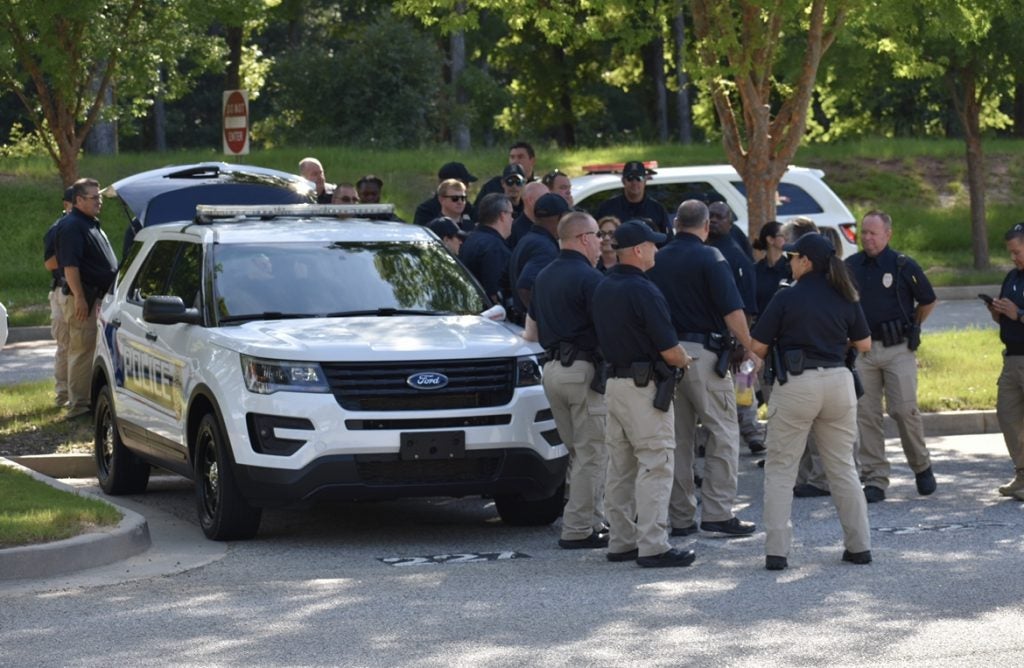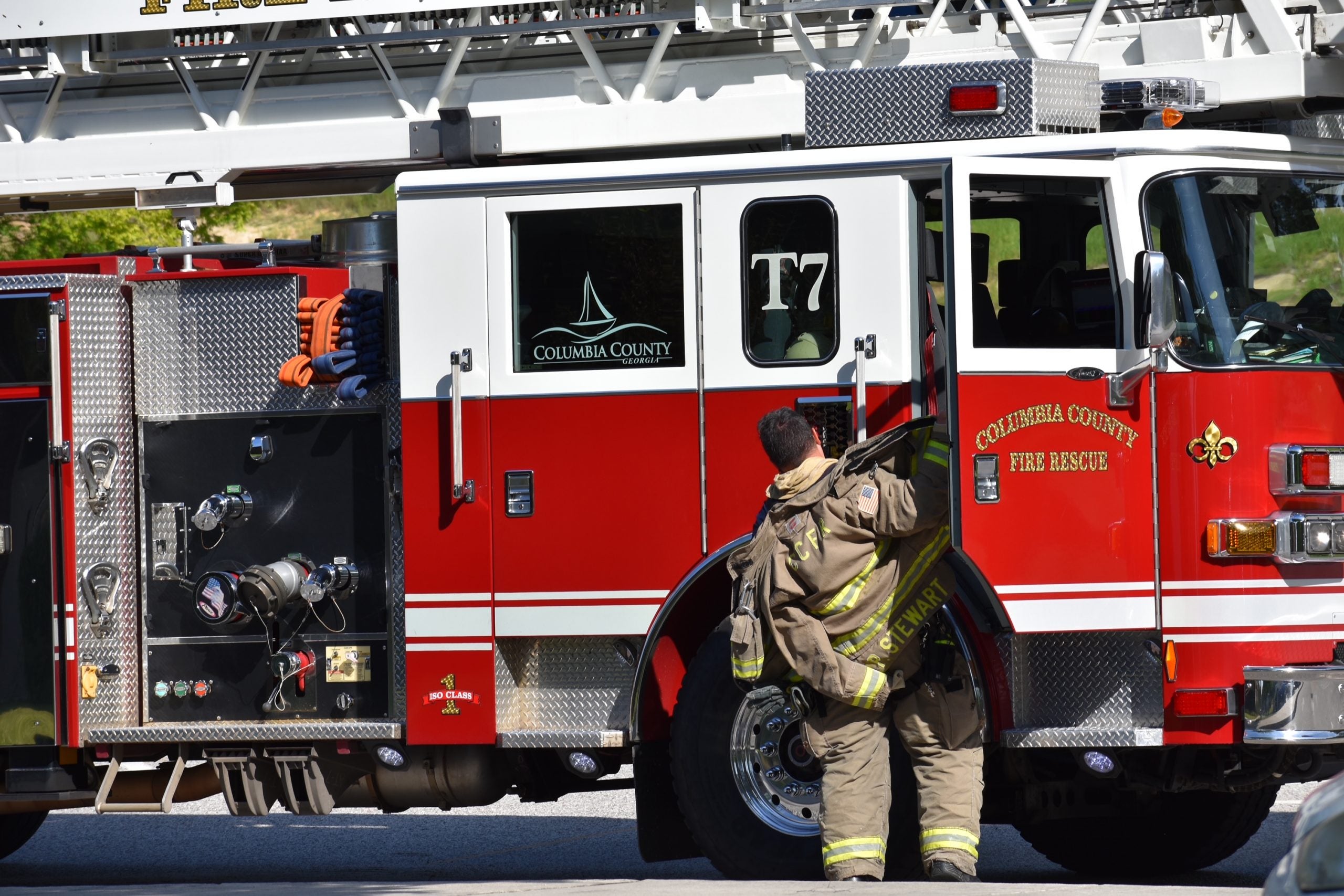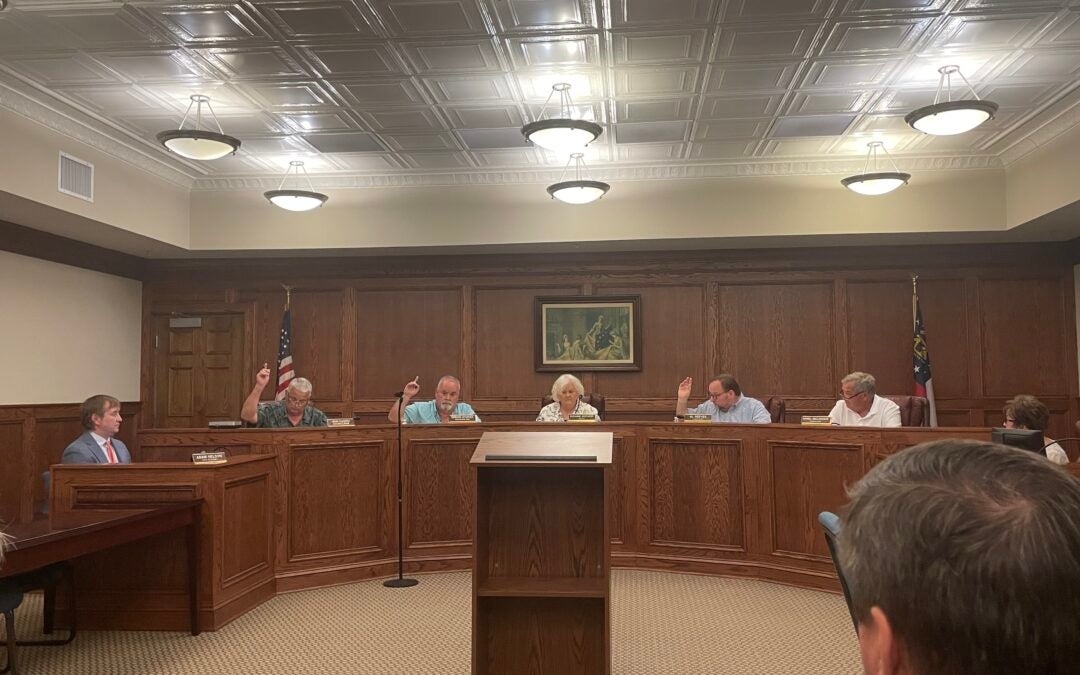By pretending a garbage truck crashed into the back of the school, the Columbia County School District simulated an emergency gas leak at Grovetown High School to test its emergency services and complete a run-through of evacuation plans.
Craig Baker, Grovetown’s principal, placed the emergency call around 9 a.m. and waited for emergency services quick arrival.
Fire and rescue, the sheriff’s office, emergency management and school resource officers all were involved. School buses were also deployed to simulate taking students to a nearby location to be reunited with parents and family, while staff awaited the building’s clearance in the parking lot.

Although the simulation consisted of only staff, several involved with the exercise spoke about the necessity of such drills even without any student participation.
“We want everybody to get to know each other,” said Shawn Granato, Director of the Columbia County Emergency Management Agency. “I mean, how can you work with someone if you don’t know who they are?”
Granato said it is important for emergency services to work together, practice together, and build a strong line of communication in order to keep everyone safe and execute an efficient plan. As school resources officers watched and gathered together in the parking lot, fire and rescue scoped the school, simulating a scan and search of students left behind.
“It shows how important it is that all of the different emergency management entities came together today to work for one common goal, and that’s to keep our students and staff safe,” said Associate Superintendent Penny Jackson.
The school board decided to simulate a gas leak over an active shooter case to avoid panic and triggering members of the community, as well as encouraging the involvement of fire and rescue.

“Active shooter right now is so close to home for so many different community members and, when we do active shooter drills, there is a sense of panic,” said Jackson.
Simulating a gas leak allowed for wide-scale school evacuation which could improve the active shooter evacuation plans, while Granato said the drill allowed for them to identify more ways to boost clear communication and ensure quick response.
“It just gives us a lot more knowledge and confidence going into the new school year that our team is ready to keep our kids safe,” said Jackson.
Columbia County Fire Rescue Operations Chief, Danny Kuhlmann, said it is important to practice wide-scale emergencies, over isolated emergencies, because they typically involve multiple departments and teams. Simulations, such as a gas leak, force different emergency workers to solve an issue together while not under the stress of an ongoing, time-sensitive emergency.

“You have to practice. If you don’t practice, you will fail,” said Granato.
Kuhlmann said the fire department’s emergency team alone would consist of almost 20 people and the response time is a maximum of six minutes but could be even lower if all trucks are operating accordingly.
Evacuation drills, severe weather and fire drills with students are completed often to ensure all emergency scenarios are well-practiced and that students are well prepared should the need ever arise.
“We’re constantly trying to change plans and think of outside-the-box situations for emergency plans and accidents so our schools can be prepared for any situation,” said Jackson.
After the simulation, the fire department and other emergency services gathered together in what Granato called a “hot wash” to review the plan and fix any errors or miscommunications in order to even further improve evacuation and emergency plans.
Liz Wright is a correspondent for The Augusta Press.








